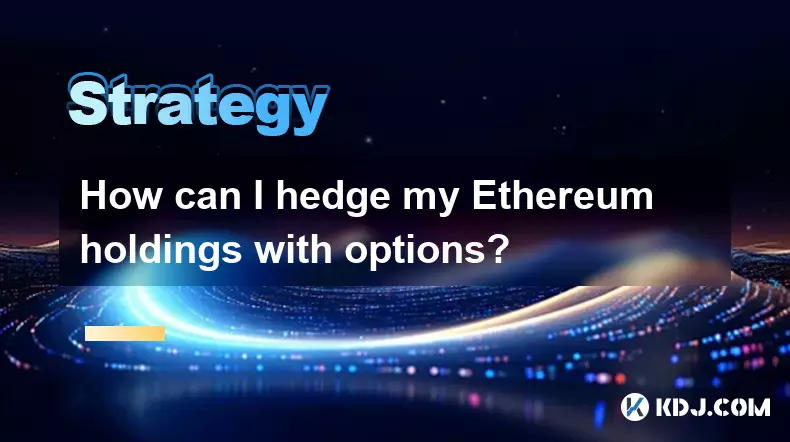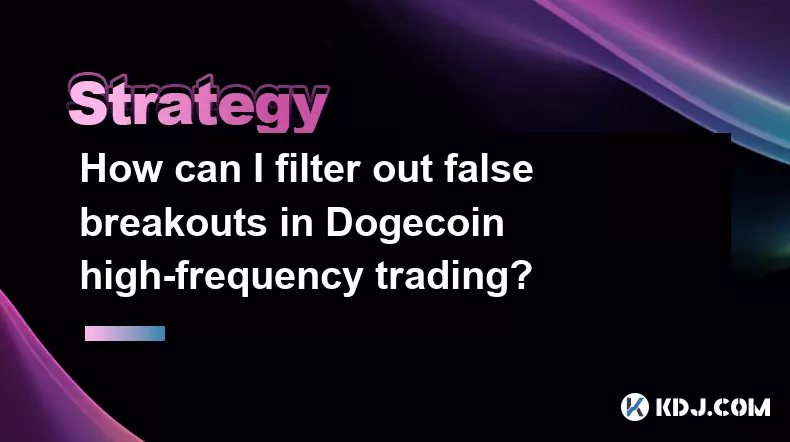-
 bitcoin
bitcoin $109523.663807 USD
-0.13% -
 ethereum
ethereum $4019.526508 USD
2.06% -
 tether
tether $1.000482 USD
0.00% -
 xrp
xrp $2.776815 USD
0.18% -
 bnb
bnb $958.942396 USD
0.12% -
 solana
solana $204.294698 USD
3.84% -
 usd-coin
usd-coin $0.999693 USD
0.00% -
 dogecoin
dogecoin $0.232115 USD
2.09% -
 tron
tron $0.338028 USD
0.84% -
 cardano
cardano $0.790920 USD
1.50% -
 hyperliquid
hyperliquid $44.871443 USD
5.60% -
 ethena-usde
ethena-usde $1.000322 USD
0.04% -
 chainlink
chainlink $21.034165 USD
2.60% -
 avalanche
avalanche $28.794831 USD
-0.54% -
 stellar
stellar $0.360466 USD
1.24%
How can I hedge my Ethereum holdings with options?
Hedging Ethereum exposure with options—like puts, covered calls, or collars—can protect against downside risk while managing costs and maintaining upside potential.
Sep 18, 2025 at 06:18 pm

Hedging Ethereum Exposure Using Options Strategies
1. Purchase put options to protect against downside risk. By buying Ethereum put options, investors gain the right to sell ETH at a predetermined strike price before expiration. If the market price drops below the strike, the put increases in value, offsetting losses in the underlying holdings.
2. Use covered calls to generate income while holding ETH. Investors who are neutral or slightly bearish can sell call options against their existing Ethereum positions. The premium received acts as a buffer if prices decline, though it caps upside potential if ETH surges past the strike price.
3. Implement collar strategies for balanced protection. This involves simultaneously buying a put option and selling a call option on the same Ethereum position. The premium from the sold call helps finance the cost of the purchased put, creating a cost-effective hedge within a defined price range.
4. Allocate based on volatility expectations. Ethereum’s price is highly sensitive to macro events, protocol upgrades, and regulatory news. Traders should assess implied volatility when entering options positions—high volatility increases premiums, making puts more expensive but potentially more valuable during sharp downturns.
5. Monitor expiration dates and adjust positions accordingly. Short-term hedges may require frequent renewal, increasing transaction costs. Longer-dated options provide extended protection but come with higher upfront premiums. Strategic timing ensures alignment with expected market-moving events.
Key Platforms Offering Ethereum Options
1. Deribit remains the dominant exchange for crypto options, offering deep liquidity and standardized contracts for Ethereum. Its settlement in ETH or BTC simplifies accounting for traders focused on native asset exposure.
2. OKX and Bybit have expanded their options offerings, introducing weekly and monthly contracts with flexible strike pricing. These platforms cater to both retail and institutional users seeking accessible hedging tools.
3. CME Group provides regulated Ethereum options denominated in USD. While less popular than spot trading, these instruments attract traditional finance participants looking to integrate crypto into diversified portfolios under compliant frameworks.
4. Delta Exchange and Bit.com offer niche products, including Asian and binary options on ETH. These alternatives allow for customized risk profiles, though lower volume can impact execution quality.
5. Decentralized options protocols like Lyra and Pods Finance enable non-custodial trading on Ethereum-based markets. Users retain control of funds while accessing peer-to-pool liquidity, aligning with self-sovereign financial principles.
Risks and Considerations in Option Hedging
1. Liquidity gaps can lead to slippage and wider bid-ask spreads, especially for deep out-of-the-money options or longer expiries. Traders must verify order book depth before placing large hedges.
2. Funding costs and opportunity loss arise when capital is tied up in premiums. Unlike stop-loss orders, options require upfront payment, which may underperform in sideways or rising markets.
3. Counterparty risk varies by platform. Centralized exchanges pose custodial risks, while decentralized protocols may face smart contract vulnerabilities or low insurance coverage.
4. Impermanent loss analogs exist in options writing. Sellers of covered calls forfeit gains beyond the strike price, effectively leaving potential profits on the table during strong rallies.
5. Tax implications differ across jurisdictions. Premiums paid for puts may not be immediately deductible, while gains from call sales could trigger short-term capital gains treatment.
Frequently Asked Questions
What is the difference between American and European style Ethereum options? American-style options allow exercise at any time before expiration, offering greater flexibility. European-style options can only be exercised at expiry, which simplifies pricing models and is more common on crypto exchanges like Deribit.
Can I hedge a staked Ethereum position using options? Yes, staked ETH retains economic exposure despite being locked in the consensus layer. Since price risk remains, purchasing put options effectively hedges the value of staked assets without disrupting validation rewards.
How do I calculate the number of options contracts needed to hedge my ETH holdings? Divide your total ETH amount by the contract size (e.g., 0.1 ETH per contract on Deribit). For 10 ETH, you would need 100 put contracts to fully cover the position. Adjust proportionally for partial hedges.
Do Ethereum options affect network congestion or gas fees? No, options trading occurs off-chain on centralized platforms or via Layer 2 solutions on decentralized venues. They do not interact directly with Ethereum’s base layer, so they do not contribute to transaction congestion or gas spikes.
Disclaimer:info@kdj.com
The information provided is not trading advice. kdj.com does not assume any responsibility for any investments made based on the information provided in this article. Cryptocurrencies are highly volatile and it is highly recommended that you invest with caution after thorough research!
If you believe that the content used on this website infringes your copyright, please contact us immediately (info@kdj.com) and we will delete it promptly.
- BTC, Hard Fork, and Disputed Futures: A Bitcoin Knots Controversy
- 2025-09-28 01:05:16
- Litecoin, Remittix, and Crypto Payments: A New Era?
- 2025-09-28 01:05:16
- Crypto Presales: Is $BFX the Next Big Thing?
- 2025-09-28 00:25:12
- Kraken's IPO Ambitions: Navigating Valuation in a Recovering Crypto Market
- 2025-09-28 00:25:12
- World Liberty Financial (WLFI): Buyback & Burn Bonanza - Will the Price Ignite?
- 2025-09-28 00:45:12
- Bitcoin's Bumpy Ride: Navigating Risks and Potential Downturns
- 2025-09-28 00:30:01
Related knowledge

Practical parameter settings for a Bitcoin multi-timeframe moving average system
Sep 18,2025 at 10:54pm
Optimizing Timeframe Combinations for Bitcoin Trading1. Selecting appropriate timeframes is crucial when building a multi-timeframe moving average sys...

How can I filter out false breakouts in Dogecoin high-frequency trading?
Sep 22,2025 at 01:00am
Understanding False Breakouts in Dogecoin Trading1. A false breakout occurs when Dogecoin's price appears to move beyond a defined support or resistan...

Techniques for identifying tops and bottoms in the Bitcoin on-chain NVT model
Sep 20,2025 at 07:54pm
Understanding the NVT Model in Bitcoin Analysis1. The Network Value to Transactions (NVT) ratio is often described as the 'P/E ratio' of the cryptocur...

What does the surge in open interest in Bitcoincoin futures mean?
Sep 20,2025 at 11:18pm
Understanding the Surge in Dogecoin Futures Open Interest1. A surge in open interest within Dogecoin futures indicates a growing number of active cont...

How can I use the Ethereum USDT premium to gauge market sentiment?
Sep 18,2025 at 11:55pm
Understanding the Ethereum USDT Premium1. The Ethereum USDT premium refers to the price difference between USDT (Tether) traded on Ethereum-based plat...

What should I do if Ethereum staking yields decline?
Sep 20,2025 at 06:18am
Understanding the Causes Behind Declining Ethereum Staking Yields1. The Ethereum network transitioned to a proof-of-stake consensus mechanism with the...

Practical parameter settings for a Bitcoin multi-timeframe moving average system
Sep 18,2025 at 10:54pm
Optimizing Timeframe Combinations for Bitcoin Trading1. Selecting appropriate timeframes is crucial when building a multi-timeframe moving average sys...

How can I filter out false breakouts in Dogecoin high-frequency trading?
Sep 22,2025 at 01:00am
Understanding False Breakouts in Dogecoin Trading1. A false breakout occurs when Dogecoin's price appears to move beyond a defined support or resistan...

Techniques for identifying tops and bottoms in the Bitcoin on-chain NVT model
Sep 20,2025 at 07:54pm
Understanding the NVT Model in Bitcoin Analysis1. The Network Value to Transactions (NVT) ratio is often described as the 'P/E ratio' of the cryptocur...

What does the surge in open interest in Bitcoincoin futures mean?
Sep 20,2025 at 11:18pm
Understanding the Surge in Dogecoin Futures Open Interest1. A surge in open interest within Dogecoin futures indicates a growing number of active cont...

How can I use the Ethereum USDT premium to gauge market sentiment?
Sep 18,2025 at 11:55pm
Understanding the Ethereum USDT Premium1. The Ethereum USDT premium refers to the price difference between USDT (Tether) traded on Ethereum-based plat...

What should I do if Ethereum staking yields decline?
Sep 20,2025 at 06:18am
Understanding the Causes Behind Declining Ethereum Staking Yields1. The Ethereum network transitioned to a proof-of-stake consensus mechanism with the...
See all articles









































































